Catherine Smith suggests ideas, activities and resources for your classroom
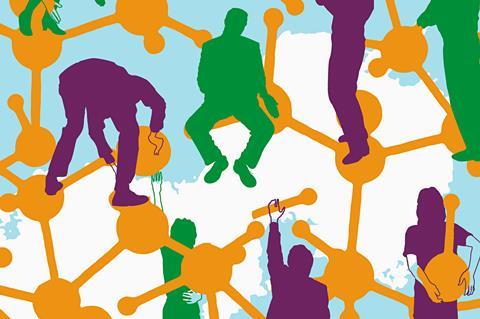
Molecules are the essential building blocks of life. Without water molecules, life on Earth would not exist. All living organisms need protein molecules for structure and function. Therefore an understanding of how atoms combine to form molecules is key to understanding the origins of life.
-
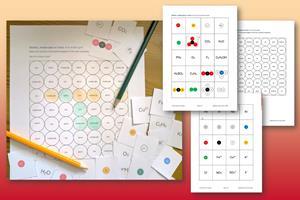
Download this
Download instructions, a grid and prompt cards to play atoms, molecules and ions 4-in-a-line.
View and download more games and puzzles
Download instructions, a grid and prompt cards to play atoms, molecules and ions 4-in-a-line from the Education in Chemistry website: rsc.li/2WayTn8
What students need to know
Atoms, molecules and ions are all examples of particles that students might meet at 11–14. But these terms are often used incorrectly in the media and everyday language leading to students of all ages being confused as to which is the correct term to use.
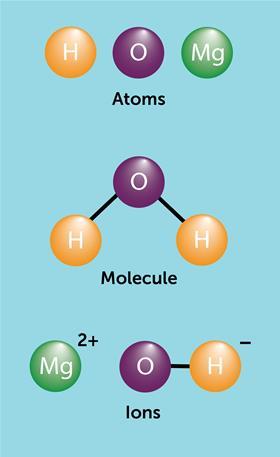
Students should understand that:
- Particles can be atoms, molecules or ions.
- Atoms are single neutral particles.
- Molecules are neutral particles made of two or more atoms bonded together.
- An ion is a positively or negatively charged particle.
Ideas for your classroom
The idea of the world being made of tiny particles is an ancient one. You could start the exploration of atoms with the ideas of Democratus (400 BC), who believed that all matter in the universe was made up of tiny, indivisible, solid objects. He called these objects atoma or ‘indivisible units’. At the start of the 19th century Dalton found evidence to support Democratus’ theory and proposed atoms to be solid spheres. Different spheres made up the different elements.
One of the key problems for students learning about atoms, is that atoms are small. Really, really small. This makes it difficult for students to conceptualise atoms as they cannot be seen, or touched, or investigated directly. A good starting point to introduce atoms and illustrate their small size is to ask students to break up a piece of graphite (the element carbon) into as many small pieces as they can. No matter how many pieces the students break the graphite into, they will never get a single carbon atom. You can challenge higher attaining students to measure the size of an individual atom using this experiment from Practical physics.
One of the key problems for students learning about atoms, is that atoms are small. Really, really small. This makes it difficult for students to conceptualise atoms as they cannot be seen, or touched, or investigated directly. A good starting point to introduce atoms and illustrate their small size is to ask students to break up a piece of graphite (the element carbon) into as many small pieces as they can. No matter how many pieces the students break the graphite into, they will never get a single carbon atom. You can challenge higher attaining students to measure the size of an individual atom using this experiment from Practical physics (bit.ly/2Km5cgt).
When atoms combine, molecules are formed. For a few elements, when atoms of that element combine, a molecule of that element is formed eg H2 and O2. When atoms of some different elements combine, a molecule of a compound can form, eg H2 O. How to teach elements and compounds, in the 11–14 CPD series, describes different strategies for teaching elements and compounds and the common misconceptions students may hold.
When atoms combine, molecules are formed. For a few elements, when atoms of that element combine, a molecule of that element is formed eg H2 and O2. When atoms of some different elements combine, a molecule of a compound can form, eg H2 O. How to teach elements and compounds (rsc.li/2W6MKut), in the 11–14 series, describes different strategies for teaching elements and compounds and the common misconceptions students may hold.
Particle diagrams can be used to help the students visualise the difference between an atom, a molecule of an element and a molecule of a compound. In fact even Dalton in the 1800s proposed a series of diagrams to represent the elements and compounds known at the time. Use of colour helps to distinguish between the atom types further. Venn diagrams help students organise their understanding of the different particle types, as described in Atoms, elements, molecules, compounds and mixtures.

Particle diagrams can be used to help the students visualise the difference between an atom, a molecule of an element and a molecule of a compound. In fact even Dalton in the 1800s proposed a series of diagrams to represent the elements and compounds known at the time (Figure 1). Use of colour helps to distinguish between the atom types further. Venn diagrams help students organise their understanding of the different particle types, as described in Atoms, elements, molecules, compounds and mixtures (rsc.li/2wzLsxS).
An atom or a molecule can lose or gain electron(s) to form an ion. At this level students only need to know that an ion is a positively or negatively charged particle. However it may be worth introducing students to the electron at this point. When an atom/molecule gains negatively charged electron(s), a negative ion is formed. When an atom/molecule loses negatively charged electron(s), a positive ion is formed. This latter point is something students often struggle with later on in their studies. Introducing the electron now, before students meet the other sub-atomic particles, can help to embed the idea that the loss of electrons results in a positively charged ion, and may help reduce confusion later on.
Owing to the interweaving of the terms atom, ion and molecule when describing the different particles, it is unsurprising that students get confused. Using games and an element of competition can be helpful to bring some variety to the necessary student practice. One such game is based on the classic Connect 4 game. You can download instructions, an example grid and game cards below.
Common misconceptions
As the students develop their understanding of chemical bonding further, it is common for students to refer to ionic compounds as molecules or to refer to intermolecular forces when explaining properties of ionic compounds. To avoid these misconceptions, it is important to introduce, and emphasise, the correct use of the terms ion and molecule from early on in a student’s chemical studies.
A molecule is a neutral particle, composed of a set number of atoms bonded together. The particle of the substance is the molecule, rather than the atoms that make up the molecule. By contrast, ionic compounds are made up of an indeterminate number of ions, in a fixed ratio. The particle of the ionic substance remains the ion. Using hands-on models can help students with these tricky concepts – eg TIMSTAR MO84200 for molecules and Molymod MKO-127-27 for ionic structures. You can further explore the use of chemical models and their limitations in Using molecular models and in the 7 simple rules to for science teaching series.
A molecule is a neutral particle, composed of a set number of atoms bonded together. The particle of the substance is the molecule, rather than the atoms that make up the molecule. By contrast, ionic compounds are made up of an indeterminate number of ions, in a fixed ratio. The particle of the ionic substance remains the ion. Using hands-on models can help students with these tricky concepts – eg TIMSTAR MO84200 for molecules and Molymod MKO-127-27 for ionic structures. You can further explore the use of chemical models and their limitations in Using molecular models (rsc.li/2wAsOpA) and in the 7 simple rules to for science teaching series (rsc.li/2XmwHKr).
Other misconceptions students may hold are discussed in Beyond appearances: Students misconceptions about basic chemical ideas, including that atoms share the properties of the bulk material and that molecules have different properties in different states.
Other misconceptions students may hold are discussed in Beyond appearances: Students misconceptions about basic chemical ideas (rsc.li/2WBsd5L), including that atoms share the properties of the bulk material and that molecules have different properties in different states.
Progression to 14–16
At 14–16, students are introduced to sub-atomic particles and how these define the nature of atoms and ions. Students then go on to study the difference between the nature of the forces that exist between atoms, molecules and ions, which they use to explain the physical properties of ionic and covalent compounds.
The resource, Why do atoms form ions allows students to assess their understanding of atoms, ions and ionic compounds and enables the teacher to identify any misconceptions.
The resource, Why do atoms form ions (rsc.li/2Kptsyq) allows students to assess their understanding of atoms, ions and ionic compounds and enables the teacher to identify any misconceptions.
Take-home points
- Particles can be atoms, molecules or ions.
- The term molecule is often used incorrectly to refer to any type of chemical compound. A molecule is a neutral particle made of two or more atoms bonded together.
- Take care with your own language, especially when referring to compounds formed during chemical reactions. Make the distinction between each particle type explicit. Give students the opportunity to organise their understanding of the different particle types with Venn diagrams.
- A good understanding of the different particle types will help students when they study structure and bonding at 14–16.
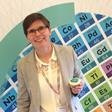




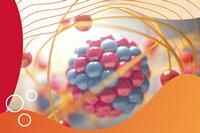









6 readers' comments